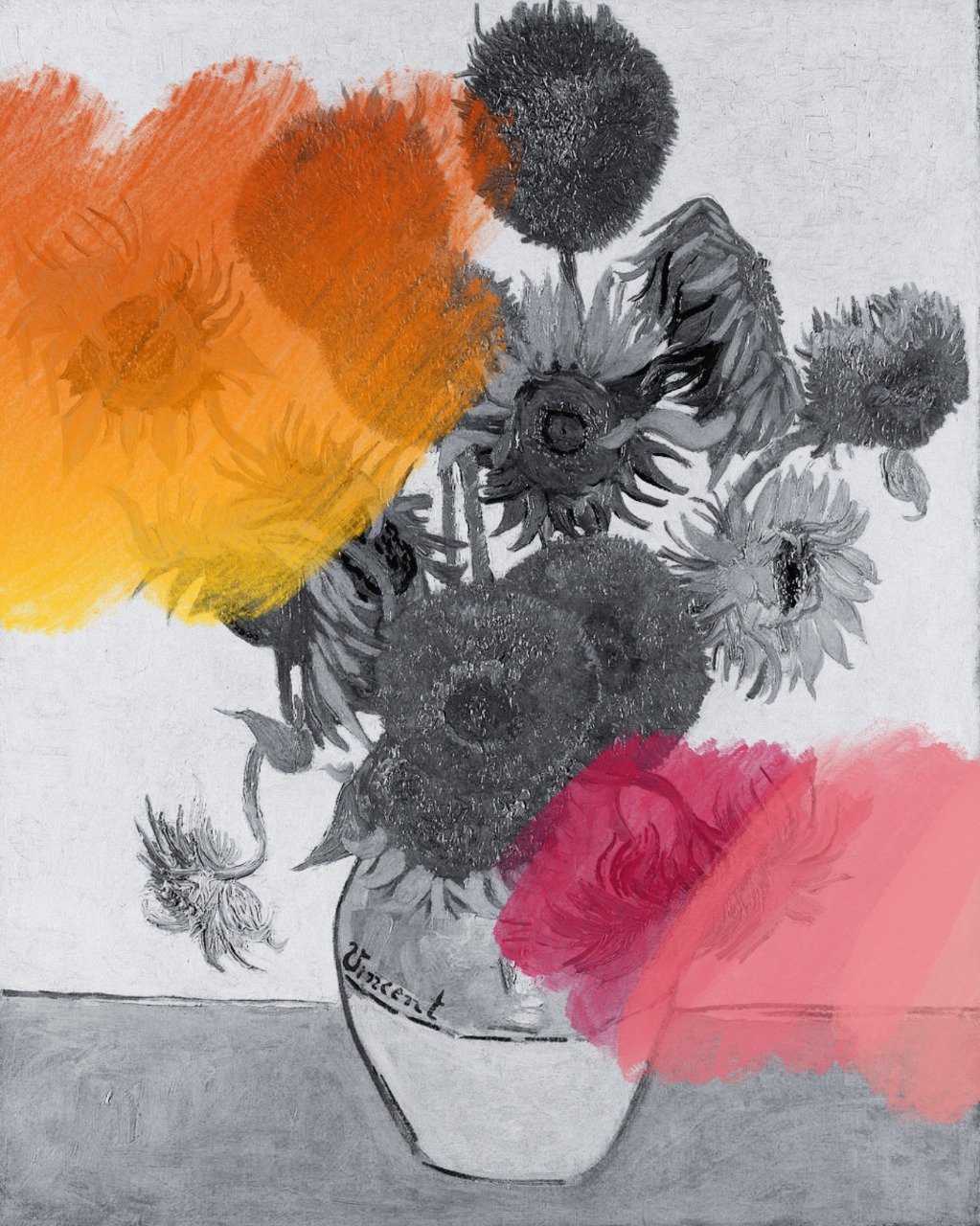The Role of Flowers in the Works of Famous Artists

For centuries, flowers have inspired countless artists whose works continue to be exhibited in the world’s most renowned museums. With their beauty, uniqueness, and rich symbolism, flowers have enabled many painters to convey mystery in their art—turning mere pigments into timeless masterpieces. So, who are these artists, and how have they used flowers in their works?
Gustav Klimt: Floral Décor
Gustav Klimt, famous for his gilded, decorative style, often incorporated beautiful flowers in his works as emotional and symbolic elements. In his iconic painting The Kiss, a field of flowers blooms beneath the lovers’ feet, symbolizing fertility and the abundance of love.
Klimt frequently fused the human body with floral patterns, blurring the boundaries between nature and desire. His flowers, beyond their beauty, carried a sense of mystery and emotion.
Vincent van Gogh: Sunflowers
Van Gogh’s Sunflowers is perhaps the most recognized floral painting in the history of art. Created in the late 1880s, the series expresses both joy and the fleeting nature of life. Van Gogh painted them in Arles, France, intending to decorate the room of his friend Paul Gauguin.
The bright yellows and thick, emotional brushstrokes reflect the artist’s inner world—full of contradictions. To him, sunflowers weren’t just flowers; they symbolized gratitude, loyalty, and the spirit of creativity. By the way, you can buy sunflowers anytime at the 24/7 flower shop.
Claude Monet: The Garden as a Living Work
Master of Impressionism, Claude Monet’s art was deeply tied to an original flower. His paintings are filled with lilies, chrysanthemums, and wisterias. His garden in Giverny became his creative muse—transforming into a true poetry of color and light.
Monet once said, “I perhaps became a painter because of flowers.” His works reflect not only the beauty of flowers but also the tranquility and fleeting charm they embody.
Georgia O’Keeffe: The Flower
Georgia O’Keeffe left a profound impact on floral painting. Her large-scale, magnified flower images invited viewers to pause and focus on every detail.
To O’Keeffe, flowers were bold, powerful, and mysterious. She often said she wanted people to see flowers the way she saw them—full of magnitude, strength, and individuality. In her hands, a flower became a universe.
Pierre-Auguste Renoir
In Renoir’s works, flowers are often linked to love, femininity, and joyful moments. He delighted in painting roses, daisies, and peonies, which filled his canvases with soft light.
He once remarked, “There are so many ugly things in life; art should not be one of them.” His floral compositions often appear in warm domestic or romantic scenes, evoking harmony and calm.
Henri Matisse: Colors and Flowers
Henri Matisse, a master of color and form, frequently included bouquets in his vibrant and dynamic compositions. He didn’t depict flowers as realistic nature copies but transformed them into bold shapes and color contrasts—turning flowers into a language of emotion.
Frida Kahlo: Flowers
Mexican artist Frida Kahlo used flowers not only in her paintings but also in her personal appearance. She was often seen wearing flower-adorned headdresses or crowns, and her self-portraits frequently featured marigolds, bougainvilleas, and calla lilies.
In her art, flowers symbolized fertility, pain, and cultural identity. In Mexican tradition, flowers signify both life and death—an idea vividly expressed in Kahlo’s works.
Édouard Manet: Subtle Serenity
Although Manet didn’t often focus on floral themes, in the last year of his life he created a series of poignant still lifes, including Vase of White Lilies and Roses and Peonies.
Manet’s flowers often appear slightly wilted, fragile, and imperfect, conveying the transience of life. His floral paintings are simple yet profound, filled with restrained emotion and sensitivity.
From Paintings to Modern Arrangements
The power of flowers lives on beyond art history. It continues today through the beautiful and unique collections found in any flower shop Yerevan has, including Mon Amie’s flower boutique. At Mon Amie, you can find distinctive bouquets tailored to any taste, whether for holidays, weddings, or simply to lift someone’s spirits.
Flowers have always held a special place in art. They represent growth, transience, beauty, and memory. The greatest painters have managed to capture these feelings on canvas, and today, florists do the same with every bouquet, carrying the timeless symbolism of flowers through the ages.
